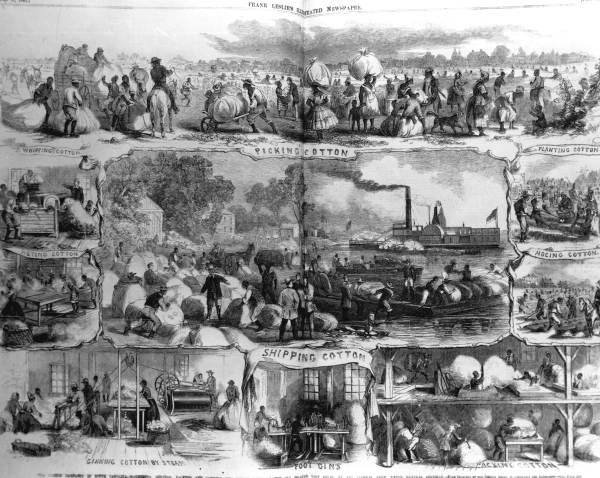
Arthur Baker was born around 1788. In 1834, he was listed in the Report of the Commissioners appointed to superintend the re-building of the State Capitol as a “laborer” compensated $.50 per day. Arthur was not able to keep the money his labor generated; it went to his enslaver, Dr. Simmons Jones Baker. In the 1834-1836 Time Books, ledgers that indicate all people who worked on the Capitol’s construction, Simmons Baker signed for Arthur, a move indicating that Baker pocketed Arthur’s pay. (Simmons Baker also enslaved Tim Harrison, another worker on the Capitol project, although he had sold Tim by the time of the Capitol’s construction. For more information on Tim)
We don’t know much about Arthur’s early life, but by the time he was working at the Capitol, his enslaver owned property in downtown Raleigh. It’s likely that Arthur walked to the Capitol project from this property.
Dr. Simmons J. Baker was born in Hertford County, NC in 1775. After being trained as a doctor, Baker lived on a plantation in Halifax County. By 1800, he sold that plantation and moved to land in Martin County. He served in the State House of Representatives in 1814 and 1815 and in the State Senate from 1816 to 1818. In 1828, Simmons Baker purchased land in Jackson County, Florida, where he lived on and off for several years, acquiring large land tracts on which to farm cotton near the present day town of Marianna.
Simmons Baker split his time between Florida and North Carolina. His property holdings also included land in the St. Marie’s district in Wake County. The 1830 and 1840 census notes that he enslaved 17 people in that part of the county. Besides hiring out enslaved workers, Baker was also involved in the Capitol project in other ways. He was Grand Master of the North Carolina Masons who presided over the cornerstone laying ceremony at the Capitol in 1833.
By 1850, Simmons Baker primarily resided in North Carolina, but was a profitable absentee enslaver in Florida. That year, his holdings produced the third largest cotton crop in Jackson County, Florida. When Simmons Baker died in 1853, his estate included multiple pieces of property in two states and 163 enslaved people. The executors of his will asked the court to “to appoint five commissioners to appraise the negro slaves belonging to the estate … to examine closely & report minutely as to the age, sex, infirmity appearance & value of said negro slaves also to report them in families as near as practicable” so they could “carry out the full intent” of Baker’s will. In this addendum to his will produced by the commissioners, Arthur Baker is one of the people listed and is noted as being Black and 65 years old. We are not sure if Arthur lived on Baker’s property in North Carolina or Florida – if he lived in Florida, it is likely that he was involved in the production of cotton. We are also unsure of what happened to Arthur following Simmons Baker’s death. Baker’s will does divide his enslaved people among his children, but it does not name who went to what child. Simmons Baker’s will also states the following to his executors and heirs: “As I am earnestly desirous that my aged and infirm slaves may be well and comfortably provided for.” Regardless of whether Arthur lived in North Carolina or Florida, he could have been considered “aged” being 65 years old at the time of Simmons Baker’s death. Based on this language, Arthur could have qualified for this act of kindness.

References:
- Census Of The United States, 1830-50, Record Group: Records of the Bureau of the Census, The National Archive, Washington, D.C.
- “Florida’s Culture of Slavery,” Florida Humanities, 2020.
- Inventory and Appraisement, Estate of Dr. Simmons J. Baker, 10 December 1853, Jackson County Courthouse, Marianna, Florida.
- Map of the City of Raleigh. Surveyed and drawn by J.W. Johnson, 1847. Accessed in the Raleigh History Collection, State Archives of North Carolina.
- Paisley, Clifton. The Red Hills of Florida, 1528-1865. University of Alabama Press Tuscaloosa, 1989.
- Plan of the city of Raleigh first published in the year 1834. Map printed by Walters, Hughes and Company, Raleigh, N.C. From the book, Early Times in Raleigh Addresses Delivered by the Hon. David L. Swain, 1867. Accessed in the Raleigh History Collection, State Archives of North Carolina.
- Race and Slavery Petitions Project. Digital Library on American Slavery.
- Report of the commissioners appointed to superintend the re-building of the State Capitol. Philo White, Printer to the State, Legislature of North Carolina, 1834. Accessed in the Raleigh History Collection, State Archives of North Carolina.
- Simmons Baker, Wills and Estate Papers (Wake County). State Archives of North Carolina. Transcribed Version.
- State Capitol: Laborer’s Time Book, State Archives of North Carolina.
- Various drawings related to the cotton trade. 1862. State Archives of Florida, Florida Memory.







